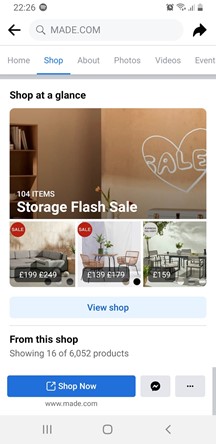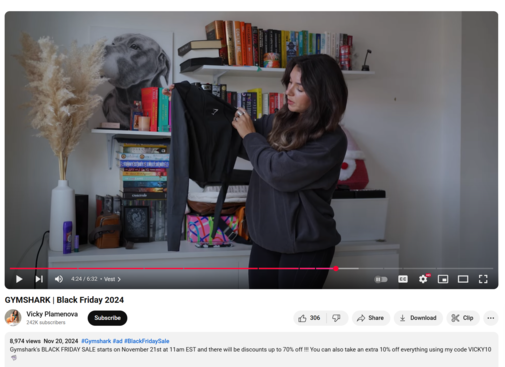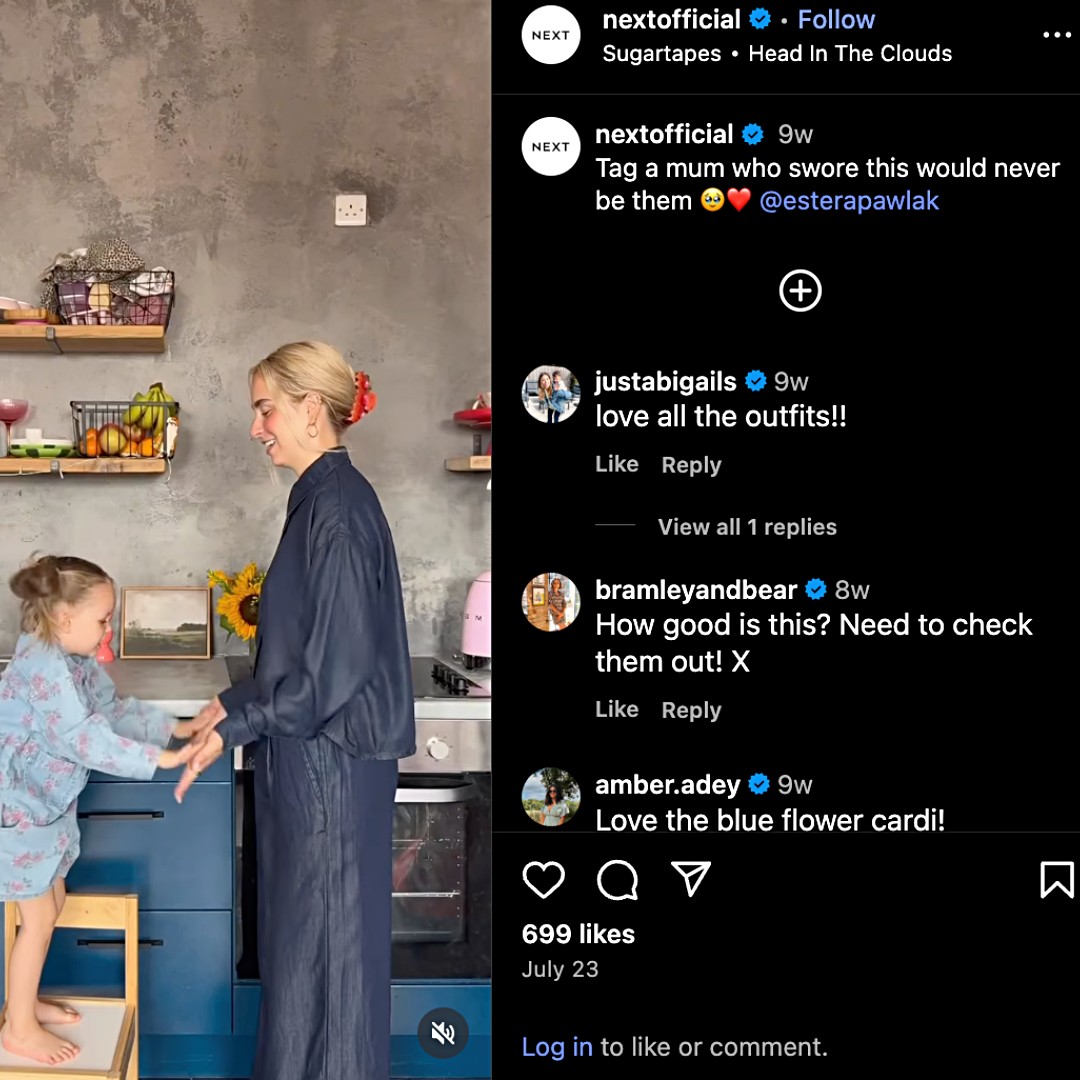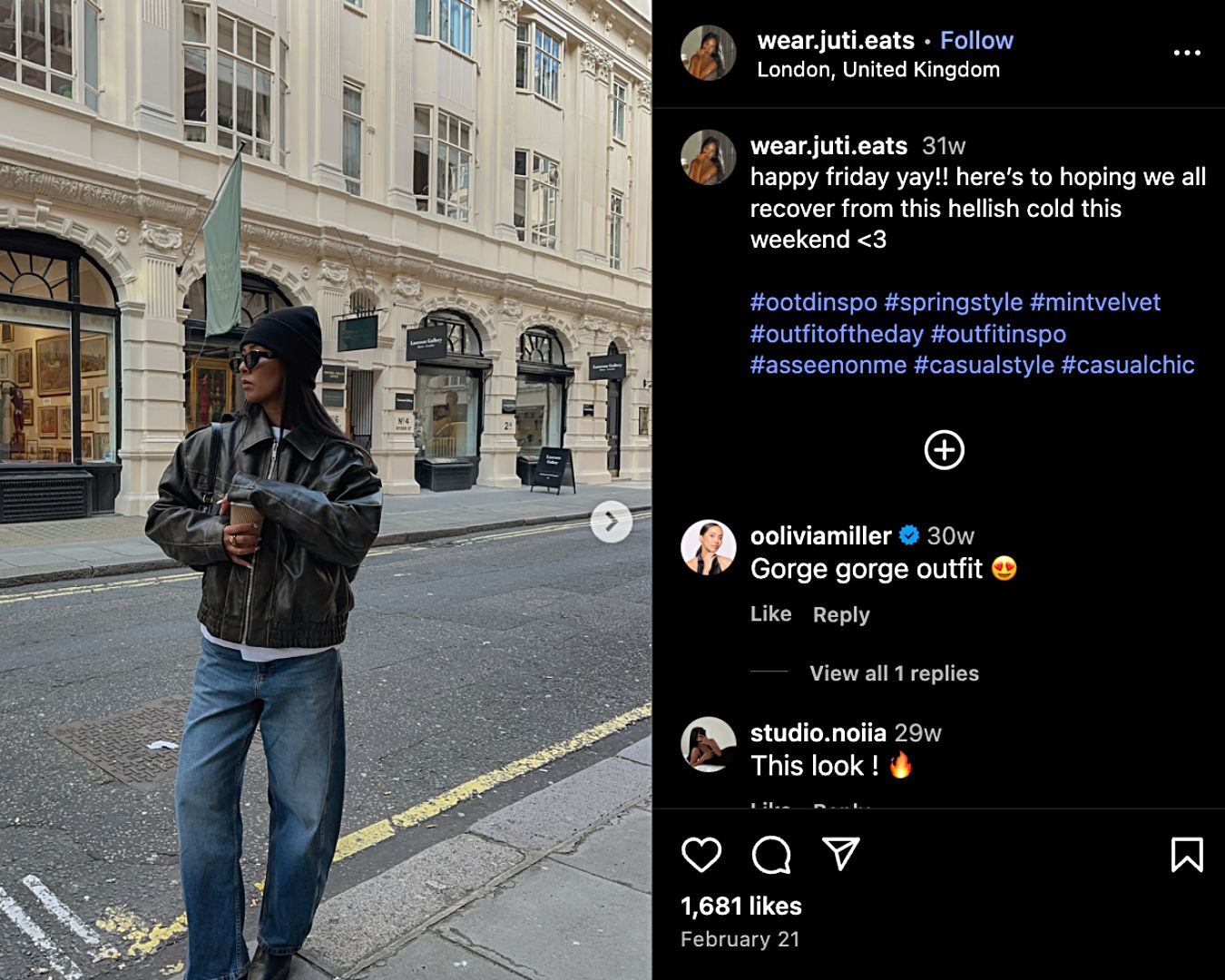The ecommerce guide to social media conversions in the UK

Table of Contents
In the UK, social media is where brands are made, or missed. But as platforms become more saturated and UK consumers demand authenticity, social teams face mounting pressure to prove ROI and accelerate conversions.
Success requires more than mere presence. It demands a strategic social media strategy built for UK audiences. This hinges on cultivating authentic content, mastering proactive responsiveness and leveraging deep, platform-specific audience insights.
But you won’t stumble upon the right strategy by trial and error—you need a tactical guide grounded in proven methodologies to crack the UK market.
Why is social media key for UK ecommerce brands?
Ecommerce success in the UK increasingly requires a social-first approach.
According to the 2025 Sprout Social Index™, 81% of consumers are driven to spontaneous, social media-fueled purchases annually. In the UK this trend is amplified, over 30% of consumers say social media drives them to make impulse purchases every month or more.
These figures confirm that UK brands without a strong social media presence are missing a primary channel for product discovery in 2025.
Beyond initial product awareness, the entire customer journey up to and including purchase, is increasingly unfolding on social media.
What drives conversions on social in the UK?
For UK ecommerce brands, two key factors influence conversion rates on social media: relatability (authenticity) and responsiveness.
Authenticity is your best sales tool
UK social media users respond strongly to authenticity. They don’t trust branded content nearly as much as user-generated content (UGC). Strategic investment in collecting and commissioning UGC from local creators is a fundamental approach to social proof that drives conversions.
Your DMs are your new customer service channel
UK brands are reporting a shift from customer emails to DMs. They are fast becoming the preferred method of contact. The Index reveals 73% of social users will promptly move to a competitor if a brand fails to respond within 24 hours. This cuts to the core of a critical ecommerce shift: social media is becoming the primary channel for online communication.
Social is now your storefront
Consumers now expect seamless social commerce integration. They don’t want the hassle of bouncing between online stores and social media apps. They want to make their purchase directly on-platform and continue browsing.
Social media buying patterns are different
This social-first model redefines the online buying cycle. Unlike a focused web search, UK social media users generally take time to think through their purchase decisions before proceeding to checkout. The journey is less directed because it often begins while they’re scrolling and distracted. They discover, continue to browse, rediscover, rinse and repeat and eventually purchase. Your social media marketing strategy needs to factor that in.
Make purchasing easy or lose the sale
With users increasingly preferring to complete sales in-app, frictionless paths to purchase are vital. Social networks are responding by adding more features to facilitate buying. Shoppable posts, story calls to action (CTAs) and other social commerce features allow users to remain on-platform.
Successful brands are not only leveraging these social commerce features, they’re also investing in third-party tracking and interaction tools, like Sprout Social. Capabilities like the Smart Inbox and URL Tracking make a real difference in driving sales in this new normal for ecommerce.
Which social media channels convert best for UK ecommerce?
Understanding which social media channels drive the strongest conversion rates is crucial for ecommerce businesses operating in the UK.
Here’s a quick run-down of the top performers:
A strong performer among millennials and Gen Z, Instagram remains a powerful social network for discovering new products and driving sales.

Key UK usage stats:
- Instagram had 33.4 million UK users as of early 2025.
- 81.2% of 18–34 year olds are active on the network.
- Ad reach grew by almost 1 million from October 2024 to January 2025.
Top conversion formats:
- Shoppable posts
- Reels
- Story swipe-ups and product tags
- Creator UGC with clear CTAs
TikTok
The go-to social media app for Gen Z, TikTok drives impulse purchases through short-form video and viral trends. It’s especially effective for marketing Fast-Moving Consumer Goods (FMCG).

Key UK usage stats:
- TikTok had 24.8 million users over 18 as of January 2025.
- 74% of online users between the ages of 18 and 24 currently use the network.
- 18–24 year olds use the platform for an average of 64 minutes per day.
Top conversion formats:
- TikTok Live shopping experiences
- Link in bio CTAs
- UGC with links to TikTok Shop
The network maintains a robust user base among baby boomers, older millennials and Gen X, making it an ideal avenue for higher ticket items due to this group’s higher purchasing power.

Key UK usage stats:
- In early 2025, Facebook had 38.3 million users in the UK. That’s 64.6% of Brits over 13 years of age.
- Ad reach increased by 1.2 million in 2024.
- Users ages 18–24 spend an average of 15 minutes per day on the platform, compared to the overall average of 39 minutes.
Top conversion formats:
- Shoppable posts and carousel ads with product tags
- Facebook Stories with swipe-up links (via Meta Ads or Shopping)
- UGC or branded content from creators with clear CTAs (e.g. “Shop now”)
X (formerly Twitter)
X offers a unique value proposition for brands, especially those targeting predominantly male audiences. While its direct social commerce features are evolving, it remains highly effective for specific conversion strategies.
Key UK usage stats:
- X has 22.9 million users in the UK (one-third of the population).
- Has a predominantly male user base with 65.8% men and 34.2% women.
- Potential ad reach decreased by 2.73 million between the beginning of 2024 and the start of 2025, and by 1.14 million between October 2024 and January 2025.
Top conversion formats:
- Product drops or launches with strong visuals and shop links
- Creator/influencer shoutouts or reviews with tagged products
- Pinned posts with CTAs (e.g. “Shop now,” “Limited stock”)
YouTube
Long-form reviews, unboxings or tutorials support higher-consideration purchases. YouTube also now supports social commerce with built-in shoppable features.

Key UK usage stats:
- YouTube has 54.8 million users in the UK—that’s 79% of the total population.
- 94% of online adults visited the network in May 2024, making it the most used social media network in the UK.
Top conversion formats:
- Shoppable YouTube videos and Shorts with product tags
- Creator product reviews or unboxings with clear CTAs in descriptions/pins
- Tutorial or how-to content showcasing products with direct links
Note that this is a high-level snapshot. What drives conversions will hinge on your specific audience, products and brand niche.
How to build a high-converting social campaign for your ecommerce brand
Building a high-converting social campaign for your ecommerce brand in the UK requires a tailored social strategy that works for the UK market’s sensibilities. Here are the essential steps:
1. Set a clear conversion goal
First, set clear conversion goals for each funnel stage. Design early funnel content to build awareness, while middle and late funnel content should aim to inspire actions, like add-to-carts or newsletter sign-ups.
Sprout’s multiple capabilities can help you achieve your conversion goals. For instance, the tagging tool simplifies content performance tracking. Simply tag “sales content” and “awareness-based content” to help you segregate and measure your progress toward distinct conversion goals. The Campaign Planner will help you set clear goals before building out your campaign plan.
2. Map content to your goal
With your conversion goals defined, engineer your content strategy to deliver on them. That means choosing the right formats, tailoring your messaging and creating content that nudges users to act, whether that’s clicking, buying or signing up.
Below are high-performing content types and formats proven to drive conversions across different objectives.
Conversion goal: Drive traffic to your website
- Link-sticker Stories
- Reels with link in bio CTAs
- Carousel posts with clear CTAs
TikTok
- Videos with CTA overlays
- Link in bio promotions
- Comment engagement driving clicks
- Link posts with clear headlines and images
- Carousel ads linking to blogs or external content
- Group posts promoting exclusive offers
Conversion goal: Drive sales
- Shoppable posts and Stories
- Instagram Shop listings
- Product promo Reels
TikTok
- TikTok Shop product demos
- Live shopping events
- Before/after videos
- Facebook Shop listings with in-app checkout
- Marketplace product posts
- Live shopping events or Q&A sessions
Conversion goal: Capture leads
- Stories promoting offers
- CTA Reels (e.g. “Sign up for 10% off”)
- Gated content via bio link
TikTok
- Lead magnet videos
- CTAs in captions
- Link in bio sign-ups
- Lead-generation ads with embedded forms
- Contest or giveaway posts requiring sign-ups
- Posts linking to gated content or newsletters
Conversion goal: Increase follower count
- Reels using trending audio and hashtags
- Collaborations with influencers or brand partners
- Commission UGC
- Hashtag challenges
TikTok
- Viral trend videos
- Collaborations with popular creators
- Engaging challenges that encourage user participation
- Giveaways requiring page likes and shares
- Content that directs back to Facebook Shop or Marketplace listings
- Engaging posts that encourage tagging and shares
- Easy direct messaging
Adapt your content format to each social network, but keep your brand voice and tone consistent across networks and content types. Your audience likely follows you on multiple networks. A cohesive strategy ensures your audience will easily recognize your ecommerce brand, no matter where they’re engaging with you.
3. Schedule, test and refine as you go
Now that you’ve built out your strategy and loaded your pipeline with tailored, high-quality content, it’s time to start posting.
For maximum effectiveness, you need to get specific about what appeals most to your audience. Remember, every audience is different, and generalised demographics data is just a starting point. You need to continually track, test and refine to discover what works best for every audience.
First, find out when your audience is active for maximum reach. Use Sprout’s optimal send times tool to automate and optimise your post times for maximum reach.
Next, leverage Premium Analytics to track which content and posting times deliver the best results. This insight allows you to easily report on what’s working and where to improve.
What metrics matter most for ecommerce conversion?
Likes are nice, but they’re not everything. The metrics that matter are the ones tied to key goals.
Engagement rates
At the awareness stage, engagement rates are a key signal of brand interest. High engagement—likes, shares, comments and saves—indicates your content is resonating and that potential customers are paying attention.
Engagement rate formula
Click-through-rate (CTR)
A high CTR is a strong signal that your content is capturing interest. It’s possible that you’ve hit the mark with your CTAs, images or video content. Whatever it is, it resonated with your target audience. A low CTR signals that your content isn’t hitting the spot and needs readjusting.
CTR formula:
Follower growth rate
The follower growth rate is a simple metric for measuring how quickly you’re building an audience. Some consider follower count a vanity metric, and while it’s certainly not everything, it does play a role in building trust.
Follower growth rate formula:
Cost per click (CPC)
CPC is a direct measure of how much you’re spending to get your viewers to click on your ad. It’s also an indirect measure of metrics that are more challenging to quantify. If your CPC is high, it could be a signal that you haven’t established sufficient brand awareness or trust with your target audience.
CPC formula:
Average time to reply
This is a critical metric to master. According to the Index, 73% of social users will switch to a competitor if they don’t hear back from a brand in 24 hours. UK users will swiftly move on if you’re not on top of your average time to reply to DMs. Measure this metric in Sprout’s Smart Inbox. It automatically calculates your team’s average response time to help you manage it.
Make it clear to your team how much this metric matters and set clear benchmarks for reply time.
Average time to reply formula:
Revenue attribution
The gold standard of ecommerce social media performance tracking is revenue attribution. The ability to directly attribute specific marketing actions to revenue earned is a game-changer that requires the right tools.
With Sprout’s Premium Analytics, you can put a dollar value on all your social media assets, helping you identify what content types or campaigns are driving real results.
Real-world social media conversion strategies from UK ecommerce brands
Next
Next has taken the rise of social commerce seriously and integrated its ecommerce platform with Facebook and Instagram. This integration allows shoppers to seamlessly browse products, check availability and make purchases on-platform.
The brand places a high priority on customer engagement. Next responds actively and promptly to comments and direct messages, which is a massive driver of conversions.
Source: Instagram
The combination of on-platform shoppability, outstanding customer service and active engagement makes for a winning social strategy.
ASOS
ASOS courts tech-savvy Gen Zers with a carefully crafted social media strategy. The brand posts dynamic, interactive videos that highlight products and offer tips aimed at inspiring audiences. By tapping into the viral potential of popular hashtags, ASOS effectively captures younger shoppers’ attention and converts their interest into sales with seamless shopping features.
Source: Instagram
With its highly popular #AsSeenOnMe hashtag, ASOS has created a never-ending stream of UGC that serves as free brand advertising.
Start building smarter strategies that convert
A powerful social media strategy is now the lifeblood of any serious UK ecommerce business. From the moment a user first encounters your product to the second they complete a purchase or DM you for support, the entire journey plays out on social media.
This new ecommerce paradigm demands leveling up your game on social. You need a strategy built around clearly defined conversion goals, platform-specific content and a deep understanding of your audiences’ behaviours.
Sprout helps ecommerce brands get real results. With intelligent scheduling and publishing tools, campaign planning and advanced analytics, Sprout gives you the tools to track what matters and drive measurable growth.
Ready to eliminate the guesswork and turn engagement into conversions? Try Sprout today and start building a high-conversion social media strategy tailored to your audience.
FAQ about social media strategies for UK ecommerce conversions
Which social media platform is best for ecommerce?
There’s no “best” platform. That depends on your audience and your goals. The best platform(s) for your brand is where your target audience actively engages and where your content feels most at home.
Instagram and Facebook arguably have the best native commerce features and the broadest user base. TikTok is ideal for discovery and impulse purchases, especially among younger demographics, and its user base is rapidly diversifying across age groups.
What are the most effective social media platforms for driving ecommerce conversions in the UK?
For UK ecommerce brands:
- Instagram is strong for direct purchases through shoppable posts, Reels and product tagging.
- Facebook offers a reliable path to conversions through Shops, Marketplace and targeted ads.
- TikTok is rapidly growing in driving discovery-led conversions, particularly through TikTok Shop and live shopping.
Using a multi-platform strategy tailored to your audience, supported by Sprout Social’s integrated analytics and scheduling tools, helps deliver the results you desire.




Share